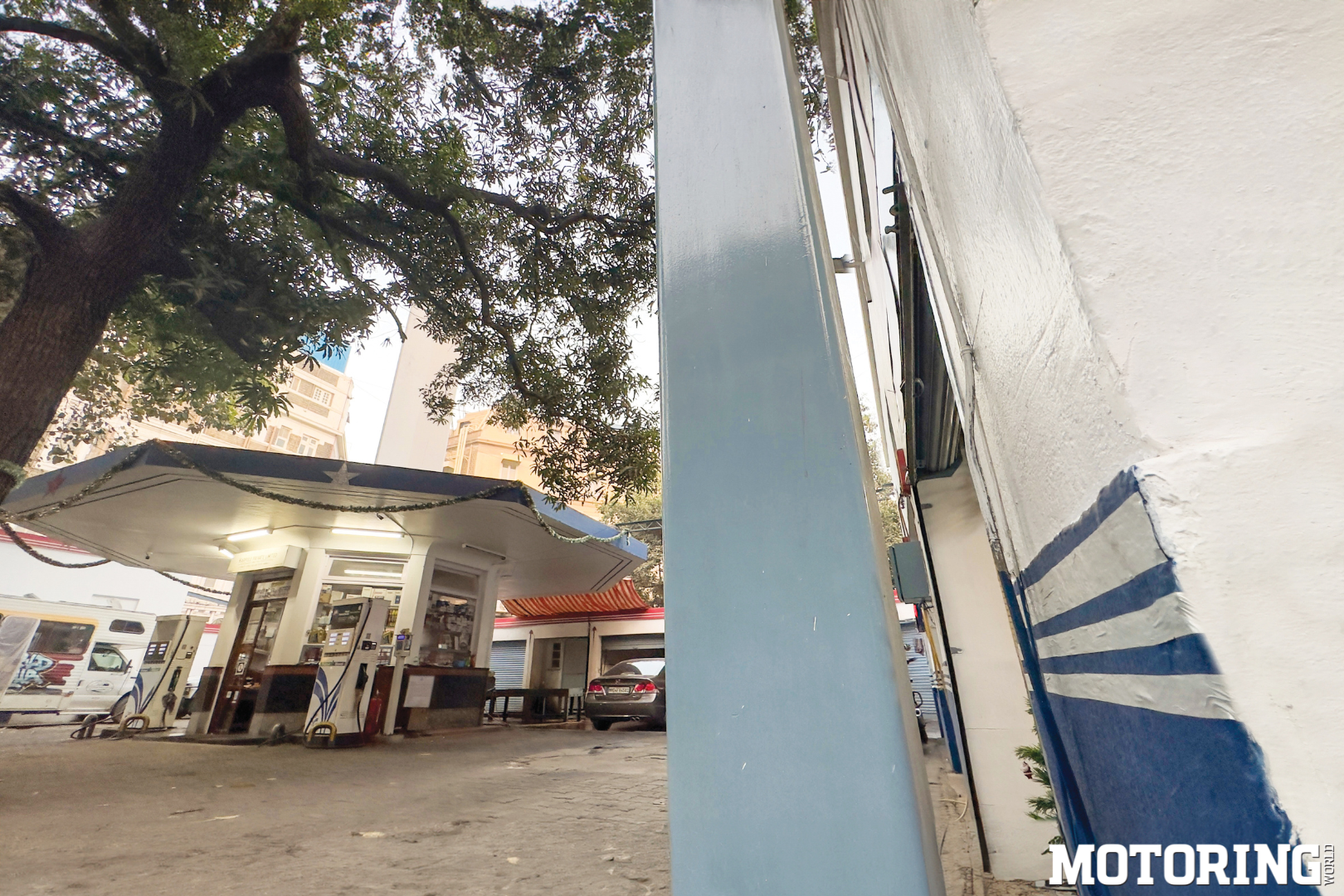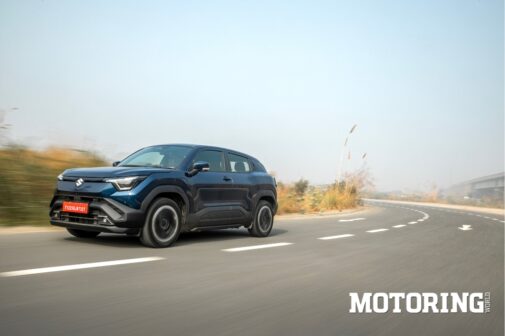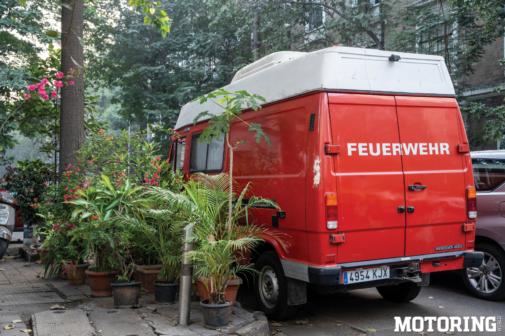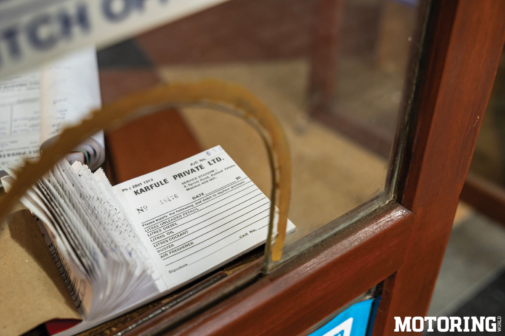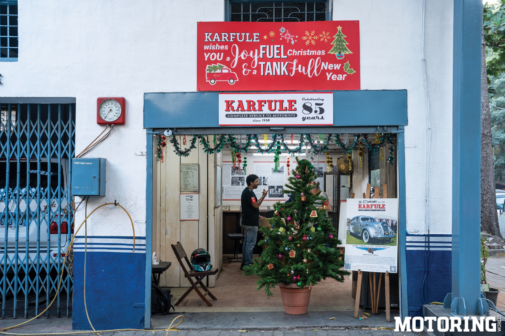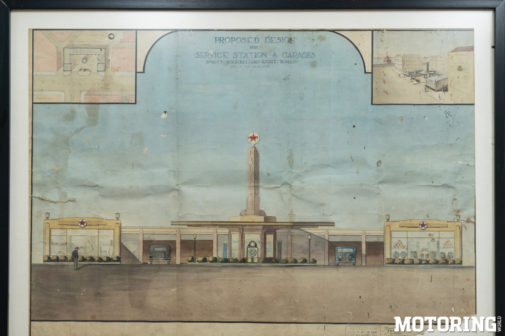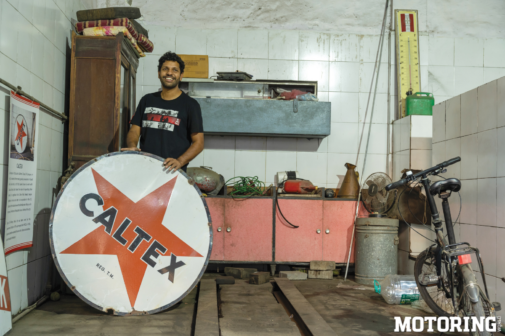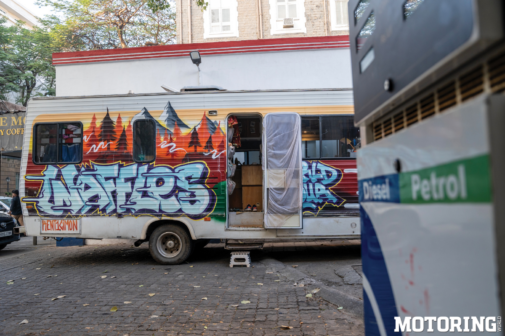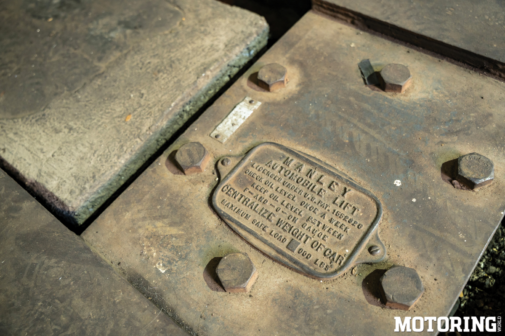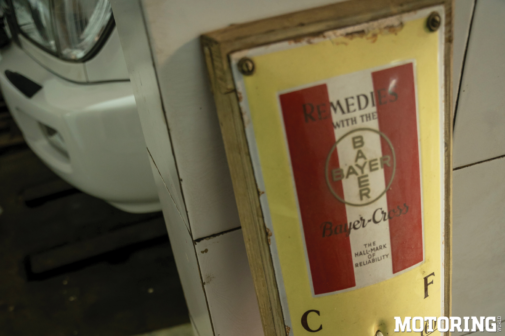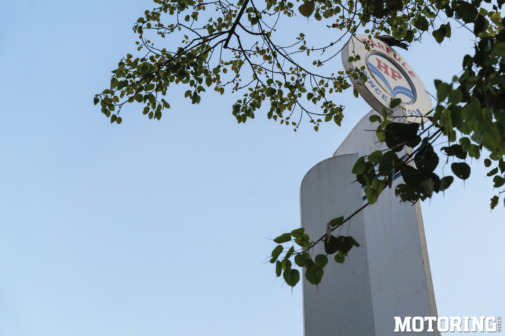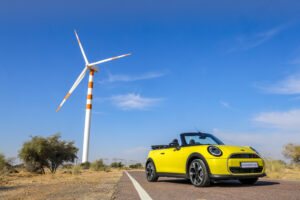Here are some facts from 1938. George VI was still emperor of India. Hitler was plotting his takeover of the world, and was also Time magazine’s man of the year. The first Superman comic was out. Howard Hughes went around the world in a plane in 91 hours. Nylon, a new synthetic yarn, was announced by its maker DuPont. LSD was first synthesised by Albert Hofmann. Nuclear fission was discovered. The coelacanth was rediscovered. And between all of that, Karfule was established in what was then called Bombay.
It’s rather humbling to think that this 85-year-old service station remains far closer in time to the invention of the automobile than to the present day. And I bet back then fossil fuel was seen to be as everlasting as time itself. Karfule was started by Gabriel and Teresa Sequeira, and is the only fuel-dispensing example in Mumbai of the Art Deco style of architecture that was all the rage at the time. Today, the founders’ grandson, Daniel Sequiera, runs the station along with his parents, Kevin and Jacints, and aims to take it back to and beyond its former glory. When I asked Daniel about any plans for Karfule’s centenary celebrations, he replied, ‘Still a while away, but the 80th and 85th anniversary celebrations were a lot of fun. So we might just begin celebrating Karfule’s birthday every year!’ For what’s not only a unique gem in the history of Indian motoring but also inextricably tied to the city’s architectural history, that’s a must, I say.
Karfule certainly has an undeniable charm, like a message from long ago that tells the story of a time when automobiles and people were still learning to coexist, at least in India. And here’s a fun fact — I grew up close to the place and have seen it several times over the past four decades, but I had no idea what it was; I just thought it was a funny-looking petrol pump, that’s all. What’s more, Daniel turned out to be a schoolmate, albeit six years behind me. I didn’t expect Karfule to become as familiar as it did in just one evening, and that says it all about the place and its approach to its function. As I stood there gazing at the station’s octagonal canopy, a lady started playing the piano (!) that stood in the display area. And music mixed with the smell of petrol hung in the air.
Karfule’s delightful little museum, all decked up for the festive season, holds the station’s long history in a spacious nutshell. It has all sorts of documentation and paraphernalia collected over 85 years, neatly displayed with pride. What better place for like-minded people to meet up, eh?
The station was designed by G.B. Mhatre, a prolific Art Deco architect. And this design proposal is a masterpiece in its own right. Wouldn’t you snap one up if Karfule decided to make replica posters of it? How about a T-shirt as well? Daniel might as well add a shop to the museum.
Daniel with the original Caltex sign that lived outside, exposed to the elements for decades. Caltex was formed in 1936 and the name stood for ‘California Texas Oil Company’. In 1978, Caltex was merged with Hindustan Petroleum after its acquisition by the Government of India in 1976.
Karfule has become a place for overlanders to congregate and park their long-distance carriages. This one from Belgium arrived that very day, without prior announcement, and was still accommodated. And there were three others from various parts of Europe parked, too. That’s the overused word ‘community’ in action.
The air-pressure gauge, not from the very beginning but still very old, has been reconditioned to look almost perfect. And it has worked flawlessly for decades, too, despite being out in the open. Made of brass, it was obviously made by people who hadn’t heard of planned obsolescence yet.
An image from Karfule’s early Caltex days. The central tower’s stripes are one of the typical elements of the Art Deco style; check out a Cord 810 or a Leigh Valley locomotive and you’ll see what I mean. And look at what’s on the right where the display area stands today — an Opel showroom!
One of the two Manley garage lifts that do the heavy lifting at Karfule. Each one is rated for 8000 lbs or a shade over 3628 kg. The badge says to check the oil level once a week; considering that they’ve been working non-stop for 85 years, how many weeks does that make it?
For a more in-depth look at Karfule and its history, simply go to the place or follow it on Instagram. And find out why it’s named that way, too!





